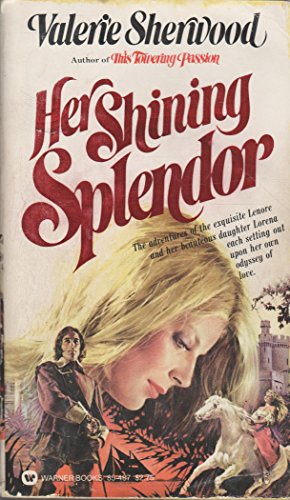Fiction has many purposes. Entertainment, education, enlightenment, and learning empathy are the big four I can think of right now. Good fiction should do all these things, sometimes without your notice. As you learn and grow, the lessons may get more subtle. Maybe the book is just brain candy,1 meant solely to entertain, and author didn’t mean to do anything Read more
tropes
No man is an island
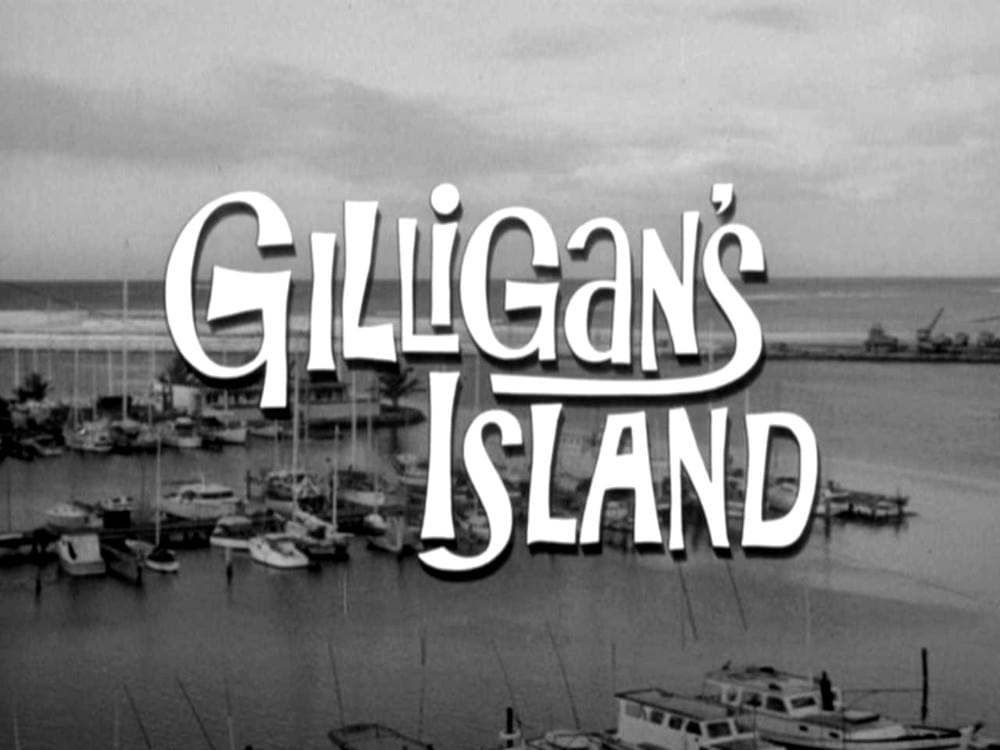 No man is an island,
No man is an island,
Entire of itself,
Every man is a piece of the continent,
A part of the main.
If a clod be washed away by the sea,
Europe is the less.
As well as if a promontory were.
As well as if a manor of thy friend’s
Or of thine own were:
Any man’s death diminishes me,
Because I am involved in mankind,
And therefore never send to know for whom the bell tolls;
It tolls for thee.
I’ve been published!!!
Like, by somebody else. (Inorite?)
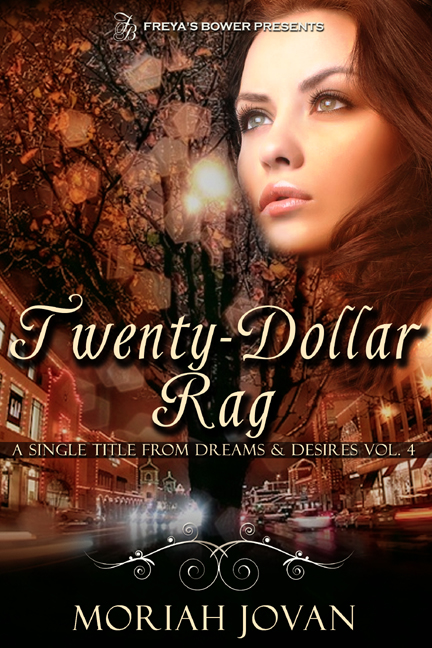
So Freya’s Bower (one of the veteran epublishers in the landscape) has this annual anthology called Dreams and Desires, where the proceeds from it go to a charity. This year’s charity is A Window Between Worlds, a non-profit organization that provides art supplies and training for art as a healing tool free of charge to battered women’s shelters across the United States.
Marci Baun, Freya’s Bower’s Perpetrator In Chief, asked me to contribute a story to the anthology, and because it’s a) for a good cause and b) for the #1 cause on my personal list of good causes, I said SURE! The result? Short story Twenty-Dollar Rag.
For fans of the Dunham series, the hero in this one is the weird kid from Stay (who wears kilts and sleeps in trees), Vachel Whittaker, all grown up and possibly more normal than the rest of the Dunham men. Lo, there is no religion or politics in it.
Here’s the blurb for Dreams and Desires:
True love, freedom, self-worth, security … Dreams and desires of the ordinary woman, or man. From a thirty-something, single woman who wants a baby to a jeweler who finds love with the least expected man to a widow who wants to finish her degree and find love to a young, futuristic woman who’s still searching for herself to an 18th century saloon girl whose lost hope but still dreams of love to a man who has escaped his abusive lover but has lost himself. This collection of nine stories celebrates the attainment of all one can dream or desire. Which one do you secretly yearn for?
And here’s the blurb for Twenty-Dollar Rag:
One night. One man. One dress.
Regina Westlake sees nothing wrong with her clubbing lifestyle until the gorgeous guy cleaning her pool refuses to play her games. When he’s hired to be her arm candy for a formal event, he makes his disdain for her clear by re-dressing her in something far more appropriate than what she had worn to the party.
Shattered, she takes his contempt, his dress, the memory of his kiss—and rebuilds her life from the ground up. She never expects to see him again, but when she does …
Buy the collection, have a few hours of entertainment and help somebody out at the same time. Win-win!
Book Review: The Actor and the Housewife
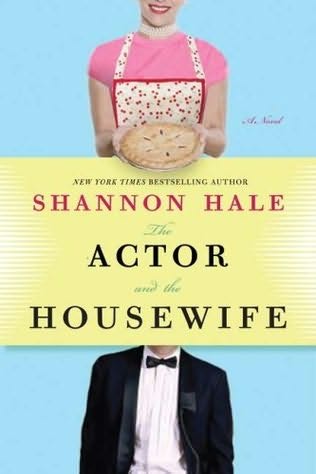 The Actor and the Housewife
The Actor and the Housewife
by Shannon Hale
Published by Bloomsbury USA
I feel like I just got jerked around in an extremely passive-aggressive manner by a narcissistic fuckwad.
I can’t tell you how pissed off I am at this moment.
No review. No more crit. You can see previous entries here and here. It’s completely irrelevant.
Tell you what. I’ll read Stephenie Meyer again before I’ll read anything else this author’s ever written. I can’t imagine Breaking Dawn is a worse betrayal by an author than this.
ETA:
I’ve gotten a bunch of emails about what actually happened, so here you go. Spoiler warning.
All the way through this book, Felix is in love with Becky. Almost painfully so. Obviously so (which is its own irritation that nobody picks up on this). He’s a very nice guy and fairly fleshed out and he’s only an ass for maybe 5 pages of the whole book.
Okay.
Her husband dies at the 2/3 mark. So, for 2/3 of the book she’s all about Felix when her husband’s around. Then, for the last 1/3, she’s all mourning her husband for two years, and Felix is there, wanting to marry her, tells her he’s been in love with her (and oh, this comes as a complete shock to her, right? Pfffttt), and now she’s all about her husband. So for pages and pages and pages and pages she’s all, “NO I’M STILL MARRIED TO MIKE!!!” (this is after 2 years of widowhood, remember) and breaking Felix’s heart, then she finally decides, yeah, okay, I can marry him. He’s my best friend after all. I’m 45 and my kids are way grown (youngest is 13 or something and oldest 2 are gone) and Felix and I can grow old together, so yeah, I think maybe I’ll think about marrying him after all.
And then they go away for a while so they can kiss uninterrupted. So they do.
And it is (I quote), “a belly-flop” of a kiss. No passion. So that’s it. They go their separate ways, I guess still being best pals on the phone or whatever.
Cuz they aren’t made for each other after all.
Because they didn’t get horny when they kissed for the first time.
Happy happy joy joy.
ARE YOU FUCKING KIDDING ME? AFTER ALL THAT FUCKING ANGST? HOW DO YOU NOT GET HORNY ABOUT THE PERSON YOU’VE BEEN IN LOVE WITH FOR ELEVEN YEARS???
She spends the first 2/3 thirds of the book w/her husband being all about Felix and the last 1/3 with Felix being all about her husband.
I have no way to reconcile any of this to any reality, writerly or Mormonly or humanly. None. It makes no sense on any level.
The zeitgeist of a story
Romance novels are mocked all the time everywhere. That’s not news. What was surprising to me upon my reentry into reading and writing romance, which necessitated entering Romancelandia, the world of romance reader blogs, was that they’re also mocked by people who love romance novels.
Some books deserve it, but some that might seem to deserve it … don’t.
Those are books from the history of romance novels that are mocked for their fashions and specific song references and other tidbits of culture that date them and, quite often, the covers that were made for them at the time. In particular, very often the sweeping scope and larger-than-life characters and plots are mocked. The people doing the mocking, I find, are young and/or young to the romance genre.
I don’t know quite what they expect when they read a book from the 1970s, 1980s, or 1990s that would rightfully be fodder for mockery if written now, but the fact of the matter is, they’re not meant to be timeless in every respect. If one puts oneself into the study of romance novels, to be intellectually honest, one must also be able to sift the culture of the time and how these novels work within that.
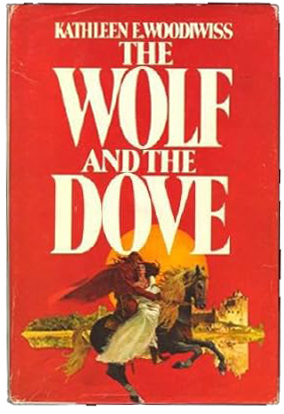
Let me put this in some context. In the early 1970s, a lady named Nancy Friday interviewed women on the subject of their sexual fantasies and published them in a couple of books: My Secret Garden (1973) and Forbidden Flowers (1975), just at the cusp of the “rape romance.” Without taking Friday’s scholarship into account, I find it interesting that many women’s fantasies at that time featured rape prominently. I also find it fascinating that these books were published nearly simultaneously with the early rape romances and thus, probably didn’t inform each other.
And then came the soap General Hospital in 1979, with Luke and Laura, which is, as far as I can tell, the most famous rape romance ever.
Mind, this definition of “rape” is not a legal one; it’s a highly stylized one in which it allows the female to retain her Good Girl status while still A) having sex and B) enjoying it because the hero is a different kind of rapist: One who is attractive, who is uncontrollably attracted to the heroine, and who gets her off after he’s made it possible for her to have an out, i.e., “I was raped.”
Why did she need an out? Because, at the time, a woman’s enjoyment of sex (especially outside of marriage) was still taboo.
(In The Proviso, one couple’s, uh, courtship [heh] is an homage to this era of genre romance.)
As an another aside, there is the shifting definition of “genre.” In the aforementioned 1970s and 1980s, many heroines typically had more than one lover throughout the course of her story, but ended happily with one. This would not happen in genre romance now unless it is a ménage à trois erotic romance.
Now, the heroine who has more than one lover during the course of a genre romance novel would not be meeting the expectations of the average genre romance reader, which is to say, sexual involvement between one man and one woman throughout the course of the book, with a happily ever after ending. (This does not speak to the fact that the male occasionally has other lovers, but in context, and with the understanding that that’s okay because a man has his needs. We haven’t come all that far, baby.)
In fact, in a Twitter conversation with (among others), @mcvane, @victoriajanssen, @redrobinreader, we decided that those romances would now be classified as women’s fiction. Naturally, our word is law.
I’m not sure why there’s this unwillingness to go along with the zeitgeist of the time in which the book was written, but instead to apply today’s standards of fashion or technology or pop culture as markers of timelessness. We don’t expect that of our historical novels, so why do we expect it of “contemporary” romances that cease to be “contemporary” the moment the galleys are finalized?
Me? I like reading the zeitgeist. I don’t miss it if it’s not there, but if it is, it’s a lagniappe for me. It gives me a feel for the time period and takes me back. Perhaps the difference is whether one is too young to be taken back or not. I don’t know.
However, in reading some earlier novels, I find this especially important because a lot of the plot devices realistically used then could not be used now because of advances in technology. If one can accept that it was 1979, and the heroine didn’t receive a letter that the hero had sent and he had no other way of contacting her or finding her to clear up a misunderstanding, one should also accept the blue eyeshadow and feathered hair.
I date my novels for a reason, which is to commit the zeitgeist of the moment in the mind of the reader, leaving no question as to its pop cultural references. In 10 years, no one can say, “That feels so dated.” They’ll have to say, “The author is very explicit about these events occurring between 2004 and 2009. If it feels dated, well, that’s because it is. It says so right in the chapter headings. Go with it.”
The expectation that one should be able to pick up a romance novel (or any other novel) from the 1970s, 1980s, 1990s, and either not be reminded that that was when it was written, or not be offended by some of the themes in the novel borne of the time it was written, seems to me that we wish to either forget that part of our history or cover up the history. More likely, however, is that we may live (and read) in the moment and may be either unwilling or unable to reference the history of the time in which the novel was written.
It’s a shame, really, because a lot of stories’ richness and layering gets lost without the proper historical context.
This book’s kinda giving me the willies.
 And I’m only 50 pages in.
And I’m only 50 pages in.
Right now I’m reading The Actor and the Housewife, and I just don’t quite know what to think. Here’s the blurb:
What if you were to meet the number-one person on your laminated list—you know, that list you joke about with your significant other about which five celebrities you’d be allowed to run off with if ever given the chance? And of course since it’ll never happen it doesn’t matter …
Mormon housewife Becky Jack is seven months pregnant with her fourth child when she meets celebrity hearththrob Felix Callahan. Twelve hours, one elevator ride, and one alcohol-free dinner later, something has happened … though nothing has happened.
It isn’t sexual. It isn’t even quite love. But a month later Felix shows up in Salt Lake City to visit and before they know what’s hit them, Felix and Becky are best friends. Really. Becky’s husband is pretty cool about it. Her children roll their eyes. Her neighbors gossip endlessly. But Felix and Becky have something special … something unusual, something completely impossible to sustain. Or is it?
A magical story, The Actor and the Housewife explores what could happen when your not-so-secret celebrity crush walks right into real life and changes everything.
This part is what gets me: “It isn’t sexual.”
My. Ass.
Now, look, Sister Hale. I realize that I shouldn’t be coming to this novel from the perspective of a romance reader, because it’s not a romance. (I know it’s not because the library cataloging block told me it isn’t. It says it’s “chick lit,” and library cataloging blocks don’t lie.) But I am coming to it from a romance reader’s perspective because it’s whispering naughty thing in romance’s ear at this point. Yet I don’t know a die-hard romance reader in the world who wouldn’t tear her hair out.
Becky Jack (the main character) is, thus far, what we romance readers would call TSTL. Too Stupid To Live.
Also? Flirting *kofffallinginlovekoff* with someone while you’re happily married is a HUGE romance no-no.
I had to take a break from the gore of this woman’s squished IQ and blog it. I don’t even know if I’ll be able to finish the book, except …
I must get back to the trainwreck that she is. I should turn my eyes away. Look somewhere else. But I can’t.
The role of urban fantasy …
… and the kick-ass heroine.
Came across an interesting article by Jennifer de Guzman about the female audience need for a female superhero. Well, you know, I followed the links to the XY asshole type who said, “No, you really don’t.” Then I went to Jezebel’s post. Read them all, then come back. Josh Tyler (who knows what women want) posts:
Catching bad guys is not a common female fantasy.
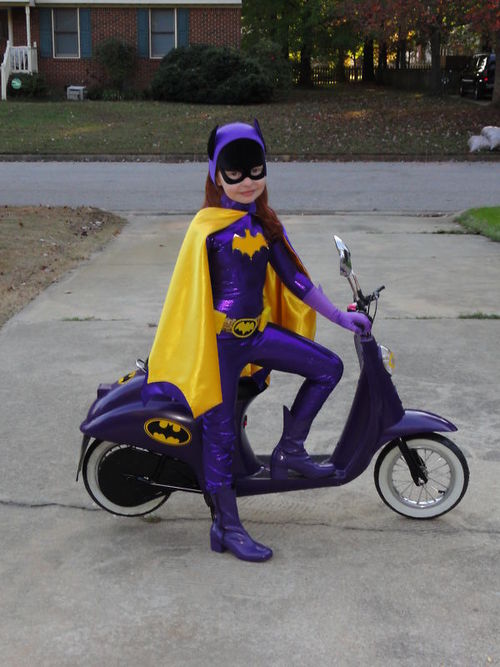 Hey, you know, lemme go back in time to my 7-year-old self and tell Little Miss Batgirl that. (Notwithstanding BatGIRL opens up a whole host of other topics and is problematic in itself.) He further digs his hole:
Hey, you know, lemme go back in time to my 7-year-old self and tell Little Miss Batgirl that. (Notwithstanding BatGIRL opens up a whole host of other topics and is problematic in itself.) He further digs his hole:
Men are interested in imagining themselves as ass-kicking heroes. Women are interested in movies about relationships and romance and love.
Now, this discussion falls under the two of my pet topics: The definition of feminism and the gatekeepers, the gatekeepers in this case being filmmakers. And I gotta say, I can think of only one filmmaker who does the female superhero well (albeit not in WonderWomanish garb): Quentin Tarantino. And he made a lot of money exploiting the hell out of her. What does he know that Josh Tyler doesn’t?
Better yet, what does genre romance know that Tyler doesn’t? This is where the genre romance gatekeepers have stepped up to the plate and it’s where women will find their superheroes, albeit it not in graphix or on celluloid.
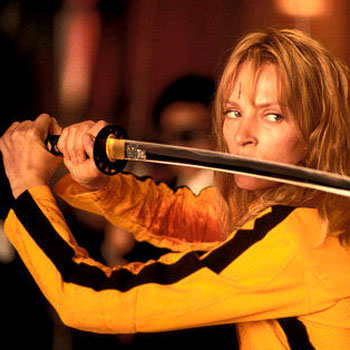 It’s the kick-ass heroine in urban fantasy. They don’t have a Batgirl or Wonder Woman outfit. They don’t have a golden lasso or an invisible plane. Sometimes they don’t come from a mysterious Other World. They have leather. They have a tramp stamp. They have guns or cross bows or daggers or swords or a combination. They prowl the streets looking for wrongs to right and bad guys who need an ass-whoopin’. Yes, yes, I hear Buffy’s name being screamed from the rooftops, but she’s not part of this discussion because …
It’s the kick-ass heroine in urban fantasy. They don’t have a Batgirl or Wonder Woman outfit. They don’t have a golden lasso or an invisible plane. Sometimes they don’t come from a mysterious Other World. They have leather. They have a tramp stamp. They have guns or cross bows or daggers or swords or a combination. They prowl the streets looking for wrongs to right and bad guys who need an ass-whoopin’. Yes, yes, I hear Buffy’s name being screamed from the rooftops, but she’s not part of this discussion because …
… most of these setups (unfortunately) involve otherworldly paranormal goo-drooling and blood-drinking types, and, quite frankly, I get tired of the endless fighting of the supernatural. How ’bout some human baddies? (This is one reason I love Beatrix Kiddo just so damned much.)
Aside: I’m not talking about kick-ass heroines whose JOB it is to be kick-ass. I’m talking about the ordinary woman pulled into extraordinary circumstances and who rises to the occasion [ahem, EILIS], or the anti-heroine who exists outside a societal structure and takes on the role of vigilante as a form of service to society (with hopes of paying restitution or redemption or at least a few cosmic brownie points) GISELLE. Or—better yet—a heroine who starts her journey being a milquetoast and ends up with a spine of steel JUSTICE. After all, we’re not born kick-ass. Life makes us or breaks us that way and the hero’s journey has never been just for men.
So here again we see that the gatekeepers (in this case, filmmakers) don’t know their audience well enough to exploit another revenue stream—but genre romance does! We’ve been subsisting on these women for decades (can you say “pirate queen”?). Clarissa Pinkola Estés even wrote a little book about the kick-ass heroine, her history, and her place in our evolutionary collective subconscious, so this?
Men are interested in imagining themselves as ass-kicking heroes. Women are interested in movies about relationships and romance and love.
He really needs to go talk to Dr. Estés or at least read her book.
Tarantino! Thurman! Thank you for The Bride. I love her. (And all of her wicked evil baddie stepsisters, too!) Now, step up to the plate and give us a female superhero only with spandex this time, ’kay? Call me!
Favorite kick-ass heroines. Who are yours?
Book Review: Zoe Winters’s “Kept”
Kept
by Zoe Winters
published by IncuBooks
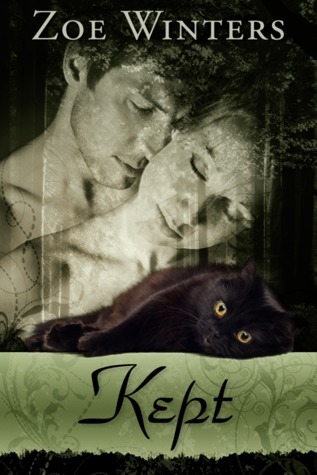 Zoe is an independent publisher I “met” by happenstance when I got soundly thrashed on Dear Author for suggesting that a multi-published author whose 3-book SERIES contract had been canceled after book 2 (leaving her fans out in the cold with characters they loved) actually self-publish the third book in the series (you know, since her rights had reverted back to her and she already has a fan base salivating for it). Good gravy, you’d’a thunk I’d said the Rapture was coming tomorrow and they’d all be left behind and have 666 burned into their foreheads bwahahahahaha burn in hell losers.
Zoe is an independent publisher I “met” by happenstance when I got soundly thrashed on Dear Author for suggesting that a multi-published author whose 3-book SERIES contract had been canceled after book 2 (leaving her fans out in the cold with characters they loved) actually self-publish the third book in the series (you know, since her rights had reverted back to her and she already has a fan base salivating for it). Good gravy, you’d’a thunk I’d said the Rapture was coming tomorrow and they’d all be left behind and have 666 burned into their foreheads bwahahahahaha burn in hell losers.
Anyhoo, as Bob Ross would say, it was a happy accident.
Kept is a free novella you can find at her site (link above) in PDF form. You can find it at Amazon in Kindle for 80¢ and you can find it on Smashwords in various formats for those of us who bitch if we don’t get it the way we want it. Somebody call me a waaaaahmbulance.
And really, “free” is my second-favorite four-letter f-word.
Here’s the blurb:
Greta is a werecat whose tribe plans to sacrifice her during the next full moon. Her only hope for survival is Dayne, a sorcerer who once massacred most of the tribe. What’s that thing they say about the enemy of your enemy?
Now, I don’t do much paranormal and I really don’t like shapeshifters, but throw the word “sorcerer” or “wizard” or “warlock” at me and I’ll take a second look. And I’m glad I did.
Beefs first:
The story was a little choppy in moments of transition, but I’ve seen that so much lately that it doesn’t bother me as much as it used to and, I’m guessing, readers are being taught to get used to it and, by extension, writers are doing it more.
Also, the story could’ve been longer with more explanation of the world. I (Random Reader who likes really really really long books) would have liked that. Let me get you some salt for that opinion.
Good stuff:
What glimpses of their world I got, I liked. I could tell it wasn’t a half-assed world half-thunk-up on the fly, and that it had depth and detail underneath. (Repeat: wanted more.)
I really enjoyed the hero’s crankiness and the fact that he was “old” (how old we’re not told, but I inferred around a century). I liked that when the hero and heroine had sex pretty nearly upfront it was because of species-specific hormone issues (i.e., cat in heat) that she usually controls with medicine, but didn’t have her medicine with her.
I laughed a lot through this book. The banter is witty and cute, seems natural to both of them, and gave the characters the depth that natural humor brings to people.
The cover’s pretty and the interior design is good. In short, it’s right up there with a lot of the novellas in the anthologies by traditional publishers that are on bookstore shelves and much better than a lot of other stuff I’ve read lately from the e-presses that I paid for. I enjoyed myself.
Coulda been longer. Did I say that?
So. If you get it from Smashwords, leave a tip, okay?
Book Review: Angel Falling Softly
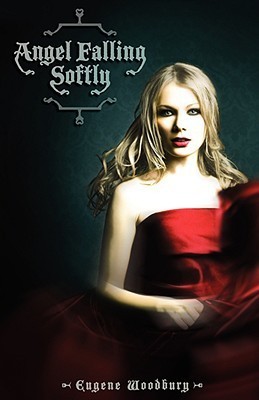 Angel Falling Softly
Angel Falling Softly
by Eugene Woodbury
published by Zarahemla Books
Perhaps I should admit upfront that I consider myself an undemanding reader. I’ll happily go wherever the author wants to take me as long as it’s logical, consistent, and interesting. Let me add that I don’t even particularly care whether a story is plot-driven or character-driven; give me something to chaw on intellectually and I’m good to go. Make me laugh and I’ll forgive almost anything.
This is one reason why, when I read Stephenie Meyer’s Twilight, I was highly annoyed [private link]. I like vampires. I’ve studied vampire myths since I fell in love with Vlad the Impaler somewhere in the early ’90s, so her inconsistent worldbuilding, her habit of telling rather than showing, and her mostly flat characterizations grated.
By contrast, Eugene Woodbury’s take is haunting. Poignant, even.

